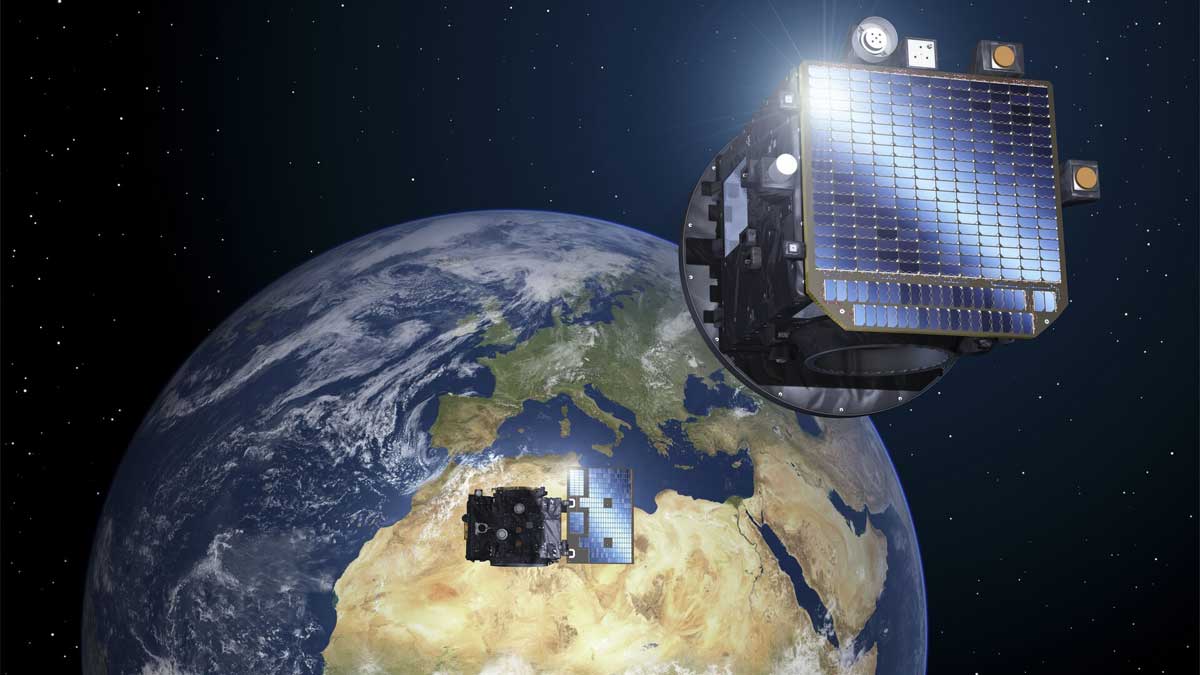How RISAT-1B strengthens India's eye in the sky and enhances national security
 Representational image | via X
Representational image | via X
The Indian Space Research Organisation (ISRO) will launch RISAT-1B, also known as EOS-09, from the Satish Dhawan Space Centre in Sriharikota on May 18. This radar imaging satellite, set to soar aboard the PSLV-C61 at 6:59 am IST, marks a significant step in strengthening India’s border surveillance and national security. Coming just days after Operation Sindoor, a bold military response to a deadly terrorist attack in Pahalgam, RISAT-1B’s launch is both timely and critical. Equipped with advanced technology, this satellite promises to be a game-changer in India’s fight against cross-border threats, offering hope and resilience in turbulent times.
RISAT-1B, a vital tool in India’s defence arsenal
The satellite RISAT-1B is no ordinary satellite and carries a C-band synthetic aperture radar (SAR), which allows it to capture high-resolution images of the earth’s surface in all weather conditions, day or night. Unlike optical satellites that struggle with clouds or darkness, RISAT-1B’s radar can penetrate these barriers, making it ideal for monitoring sensitive border areas like Jammu and Kashmir. This capability is vital for detecting infiltrations, tracking suspicious movements, and supporting anti-terrorist operations. With tensions along India’s borders remaining high, the satellite’s ability to provide continuous, reliable intelligence is a strategic asset to the security forces.
“RISAT-1B, with its advanced imaging, will enhance India’s ability to monitor terrorist activities and ensure swift responses to potential threats. It builds on the legacy of earlier RISAT satellites, which played key roles in operations like the 2016 surgical strikes, proving their worth in safeguarding the nation. India’s RISAT series has long been a cornerstone of its security strategy. Launched after the 2008 Mumbai attacks, the series was designed to bolster border surveillance and deter infiltration. Satellites like RISAT-2BR1, launched in 2019, offered resolutions as fine as 0.35 meters, enabling security forces to identify objects with remarkable clarity,” explained space expert Girish Linganna.
Experts point out that though specific details about RISAT-1B’s resolution are not public, it is expected to match or surpass its predecessors, ensuring even sharper imagery. This precision is crucial for planning operations and maintaining vigilance in areas prone to insurgent activity, making RISAT-1B a vital tool in India’s defence arsenal.
Unlike traditional optical cameras that rely on visible light, SAR cameras on RISAT-like satellites can penetrate dense cloud cover and operate in any lighting conditions.
“This capability is a game-changer for border areas where surveillance is often hindered by fog, rain, or darkness. High-resolution radar images can detect even minor changes such as fresh soil disturbances, new encampments, or vehicular movement providing actionable intelligence that ground patrols or conventional surveillance tools might miss. This ensures round-the-clock vigilance in remote and inaccessible areas and significantly enhances India’s border control capabilities,” remarked Srimathy Kesan, founder and CEO of Space Kidz India.
What are RISAT-1B’s features?
RISAT-1B features five distinct imaging modes, offering the flexibility to switch between ultra-high-resolution imaging of up to 1 meter for detecting small objects and broader scans for large-area observation. This adaptability allows it to serve both military and civilian purposes.
“In the defence domain, it can identify unauthorised border activities, track infiltration routes, and detect hidden structures like tunnels and bunkers. Civilian applications include flood mapping, cyclone monitoring, soil moisture analysis, and crop health assessment—critical for disaster response and agricultural planning,” added Kesan.
The radar’s hybrid polarimetry adds further advantage by distinguishing between natural terrain and man-made objects, improving detection accuracy in areas where camouflage and terrain blending are common tactics.
Beyond security, RISAT-1B reflects India’s growing prowess in space technology. The satellite’s indigenous SAR technology reduces reliance on foreign systems, ensuring that our surveillance capabilities remain sovereign and secure. ISRO’s ability to deliver such advanced systems highlights India’s scientific achievements and its commitment to self-reliance.
However, experts note that continuous border monitoring requires multiple satellites in orbit. “At least four RISAT satellites are needed for daily coverage of critical areas, and RISAT-1B’s addition brings India closer to this goal, strengthening its strategic posture,” added Linganna.
Sci/Tech